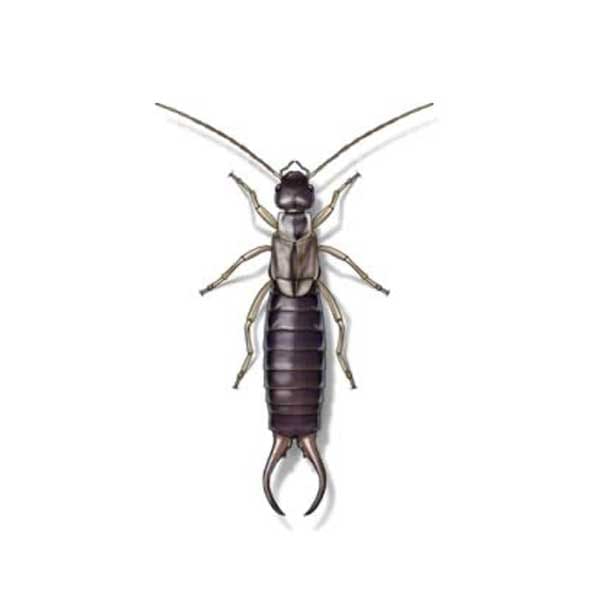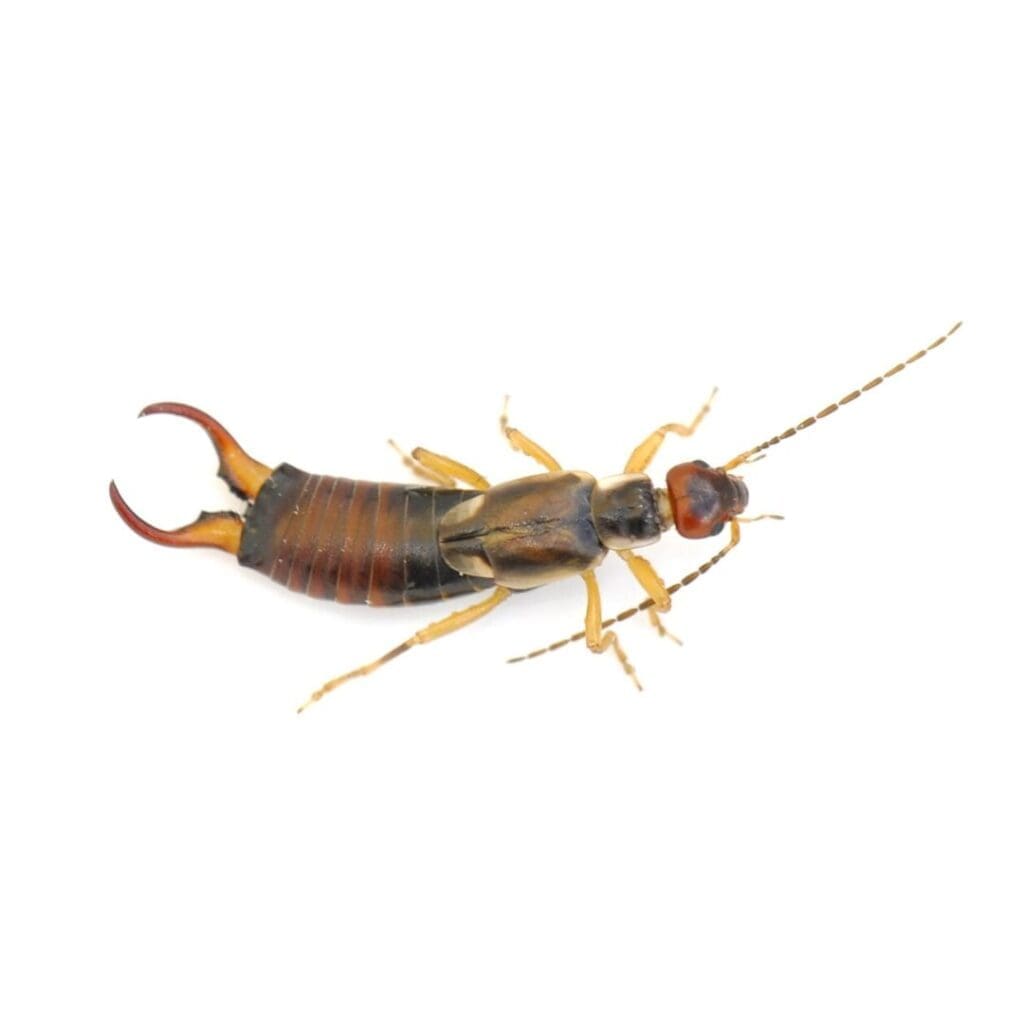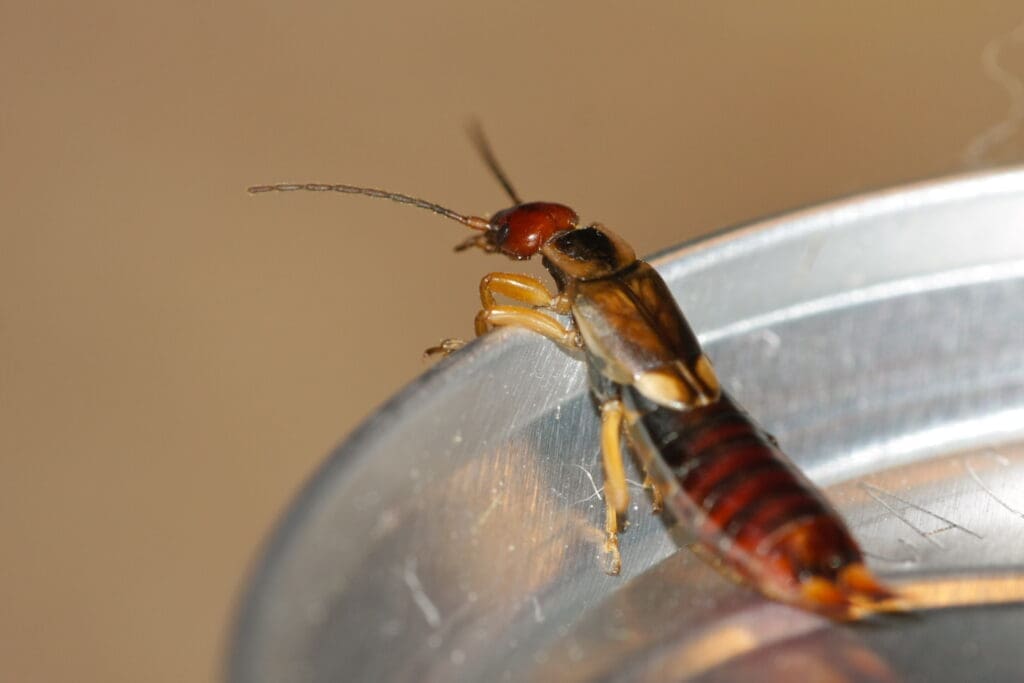Are you curious about the fascinating world of earwig behavior and how to effectively control these tiny creatures? Look no further! In this article, we will explore the intricate details of earwig behavior, shedding light on their habits, habitats, and peculiarities. Additionally, we will provide valuable insights into the most effective methods of earwig control, equipping you with the knowledge to tackle these pests head-on. Whether you’re a pest control enthusiast or simply seeking solutions for an earwig infestation, this article is packed with valuable information to help you understand and manage these intriguing insects. So, let’s dive right in and uncover the intricacies of earwig behavior and control!

Overview of Earwigs
Earwigs are small, elongated insects that belong to the order Dermaptera. They are characterized by their forceps-like cerci, which protrude from their abdomen. These insects have a flattened and elongated body, ranging in size from 5 to 25 millimeters. They have two pairs of wings, but not all species are capable of flying.
Physical Characteristics
Earwigs have a distinct appearance with their dark brown or reddish-brown exoskeleton. Their forceps, or cerci, are curved and resemble pincers, which they use for defense and capturing prey. These insects also have long antennae and a pair of compound eyes.
Habitat and Distribution
Earwigs can be found in various habitats around the world, ranging from temperate regions to tropical areas. They prefer environments with moisture, such as gardens, flower beds, and damp crevices. Some common hiding places include under rocks, decaying wood, and plant debris.
Life Cycle and Reproduction
Earwigs undergo incomplete metamorphosis, meaning they go through three stages: egg, nymph, and adult. Females typically lay their eggs in the soil, providing protection and moisture for the developing young. After hatching, the nymphs resemble miniature versions of the adults but lack wings. They molt several times before reaching adulthood.
Male earwigs engage in elaborate courtship rituals to attract females, which may involve secretions and even playing dead. Once mating occurs, the female takes care of the eggs and nymphs until they become independent.
Earwig Behavior
Earwigs display various behaviors that are crucial to their survival and reproduction. Understanding their behavior is essential for effective control methods.
Feeding Habits
Earwigs are opportunistic omnivores, feeding on a wide range of food sources. They are known to consume both plant matter, such as leaves, flowers, and fruits, as well as insect prey. Earwigs are also scavengers, often feasting on decaying organic matter.
Communication and Social Interactions
Earwigs use multiple forms of communication to interact with each other. They release pheromones, or chemical signals, to communicate information about food sources, mating availability, and danger. They also engage in tactile communication through antennal contact and the use of their forceps.
Some earwig species exhibit social behavior, living in groups and cooperating in tasks such as brood care and defense. The level of sociality can vary among species.
Nocturnal Behavior
Earwigs are primarily nocturnal creatures, preferring to remain hidden during the day and becoming active at night. They are most active during warm and humid conditions, seeking out food and mates under the cover of darkness. This behavior allows them to avoid predation and excessive desiccation.
Signs of Earwig Infestation
Detecting an earwig infestation is vital for implementing appropriate control measures. Some signs to watch out for include:
Damage to Plants and Crops
Earwigs can cause significant damage to plants, particularly seedlings and soft fruits. They may nibble on leaves, flowers, and fruits, leaving behind irregular holes or chewed edges. If you notice such damage on your plants or crops, an earwig infestation could be the cause.
Indoor Infestation Signs
In homes and buildings, earwigs may seek shelter in dark and damp areas, such as basements, bathrooms, and kitchens. If you find earwigs crawling indoors or discover their presence in these areas, it could indicate an infestation. Look for their characteristic pincers or their shed exoskeletons as additional evidence.
Earwig Control Methods
controlling earwig populations can be achieved through various methods, depending on the severity of the infestation and the specific circumstances. Here are some control options:
Preventive Measures
Taking preventive measures can help minimize the chances of an earwig infestation. Some effective methods include:
-
Reducing Moisture and Hiding Places: Since earwigs are attracted to moisture, it is important to eliminate excess moisture in and around your property. Fix any leaks, ensure proper drainage, and remove standing water. Additionally, removing potential hiding places such as piles of organic debris can discourage earwigs from settling in.
-
sealing cracks and crevices: Seal any cracks and crevices in your home or building to prevent earwigs from gaining entry. Pay close attention to areas around windows, doors, and utility pipes, as well as gaps in the foundation.
-
Proper Landscaping Practices: Keep your garden and landscape well-maintained to minimize earwig-friendly environments. Regularly clean up fallen leaves, mulch, and other organic debris, and consider using gravel or rock barriers around vulnerable areas to deter earwigs.
Natural Control Methods
Employing natural control methods can provide effective and environmentally-friendly solutions to manage earwig populations. Some natural control methods include:
-
Beneficial Predators: Encouraging the presence of natural predators, such as birds, toads, and ground beetles, can help keep earwig populations in check. Providing suitable habitat and food sources for these predators can attract them to your garden or landscape.
-
Trapping and Exclusion Techniques: Setting up traps, such as rolled-up newspaper or cardboard tubes, can be an effective way to catch earwigs. Place the traps in areas where earwigs are likely to hide and dispose of them regularly. Exclusion techniques, such as using fine mesh or caulking, can also be employed to keep earwigs out of specific areas.
-
Use of Deterrent Plants: Growing certain plants with natural repellent properties, such as mint, garlic, or calendula, can help deter earwigs. Planting these deterrent plants strategically around vulnerable areas can act as a natural barrier.
Chemical Control Options
In situations where preventive and natural control methods are not sufficient, chemical control options may be necessary. It is important to use these methods responsibly and according to label instructions. Some chemical control options for earwig management include:
-
Insecticidal Sprays: Applying insecticidal sprays formulated for earwig control can be effective. These sprays typically contain pyrethroids or carbaryl as active ingredients. Thoroughly spray the affected areas, targeting the areas where earwigs are likely to hide.
-
Dusts and Baits: Dusts and baits specifically designed for earwig control can be used to target these pests. The dusts are applied to cracks, crevices, and other hiding spots, while baits can be placed near earwig activity areas.
-
Professional Pest Control Treatments: If the infestation persists or requires specialized expertise, contacting a professional pest control service is advisable. They can provide customized treatment plans based on the severity of the infestation and the specific circumstances of the property.

Earwig Control in Gardens and Landscapes
If earwigs are causing damage to your garden or landscape, specific control methods can be employed to address the issue. Here are some strategies for earwig control in outdoor areas:
Inspection and Identification
Thoroughly inspect your garden and landscape, identifying areas where earwigs may be hiding or causing damage. Look for chewed leaves, holes in fruits, and evidence of earwig activity, such as shed exoskeletons. Identifying the severity of the infestation will help determine the most appropriate control methods.
Cultural Control Methods
Implement cultural control methods to reduce earwig populations in gardens and landscapes. These methods include:
-
Removing hiding places: Regularly remove debris, such as fallen leaves and plant matter, which can provide shelter for earwigs. Clean up garden beds and prune overgrown vegetation to eliminate potential hiding spots.
-
Handpicking: If the earwig population is small, manually removing them from plants and depositing them in a bucket of soapy water can help control their numbers.
Specific Garden Treatments
Consider using targeted treatments to manage earwigs specifically in garden areas. Some garden treatments include:
-
Homemade traps: Create homemade traps using empty yogurt containers or small buckets filled with a solution of vegetable oil and soy sauce. Place these traps near affected plants to attract and trap earwigs.
-
Diatomaceous earth: Sprinkle diatomaceous earth, a natural product made from microscopic fossils, around the base of plants or affected areas. The sharp particles in diatomaceous earth can penetrate the exoskeleton of the earwigs, resulting in dehydration and ultimately their demise.
-
Organic insecticides: Utilize organic insecticides, such as those containing spinosad or neem oil, to target earwigs in gardens. These products are derived from natural sources and are considered safer for the environment.
Earwig Control in Homes and Buildings
If you discover an earwig infestation in your home or building, it is crucial to address the issue promptly to prevent further problems. Here are some methods for controlling earwigs indoors:
Interior Inspection and Exclusion
Inspect the interior of your home or building to identify areas where earwigs may be gaining entry. Seal any cracks or openings in walls, windows, doors, and utility pipes. Install door sweeps and create barriers to prevent earwigs from entering.
Crack and Crevice Treatments
Apply insecticidal dust or suitable crack and crevice treatments to areas where earwigs are likely hiding indoors. Focus on baseboards, cracks in flooring, and other dark, damp spaces where earwigs may seek shelter. Ensure proper ventilation when using these products.
Indoor Sprays and Dusts
Use insecticidal sprays or dusts specifically labeled for indoor use to target earwigs. Apply these products around windows, door frames, and other areas of activity. Follow all label instructions and exercise caution when administering these treatments in indoor environments.

Product Reviews: Earwig Control
Considering the severity of an earwig infestation and the specific needs of your property, utilizing effective earwig control products can be a valuable solution. Here are some top-rated and recommended earwig control products:
Top-rated Earwig Control Products
-
Brand A Earwig Spray: This insecticidal spray is highly effective for controlling earwigs, providing immediate knockdown and residual protection.
-
Brand B Earwig Dust: This dust formulation is perfect for targeting earwigs in cracks and crevices, delivering long-lasting control.
-
Brand C Earwig Bait: This bait is designed to attract earwigs, luring them in and eliminating them effectively.
Best Earwig Control Products for Gardens
-
Brand D Garden Spray: This garden spray is specifically formulated to target earwigs, providing control without harming beneficial insects.
-
Brand E Organic Insecticide: This organic insecticide is safe for use in garden areas, effectively controlling earwigs while minimizing environmental impact.
-
Brand F Earwig Traps: These traps are specifically designed for outdoor use, catching earwigs and reducing their population in garden settings.
Recommended Indoor Earwig Control Solutions
-
Brand G Indoor Spray: This indoor spray is ideal for use in homes and buildings, providing efficient control and residual protection against earwigs.
-
Brand H Indoor Dust: This indoor dust formulation is effective for targeting earwigs in cracks and crevices, ensuring thorough control in indoor environments.
-
Brand I Indoor Bait Stations: These bait stations are designed to attract and eliminate indoor earwigs, providing a convenient and discreet control solution.
In conclusion, understanding the intricacies of earwig behavior is essential in effectively controlling these pests. By implementing preventive measures, utilizing natural control methods, or considering chemical options when necessary, you can effectively manage earwig infestations both outdoors and indoors. Choose the most suitable earwig control products based on your specific needs and the severity of the infestation to achieve optimal results.

I am Randy, the author behind PestControld.com. Drawing from decades of experience, I aim to provide valuable insights, expert advice, and practical recommendations to help you make informed decisions when assessing viable pest control solutions.